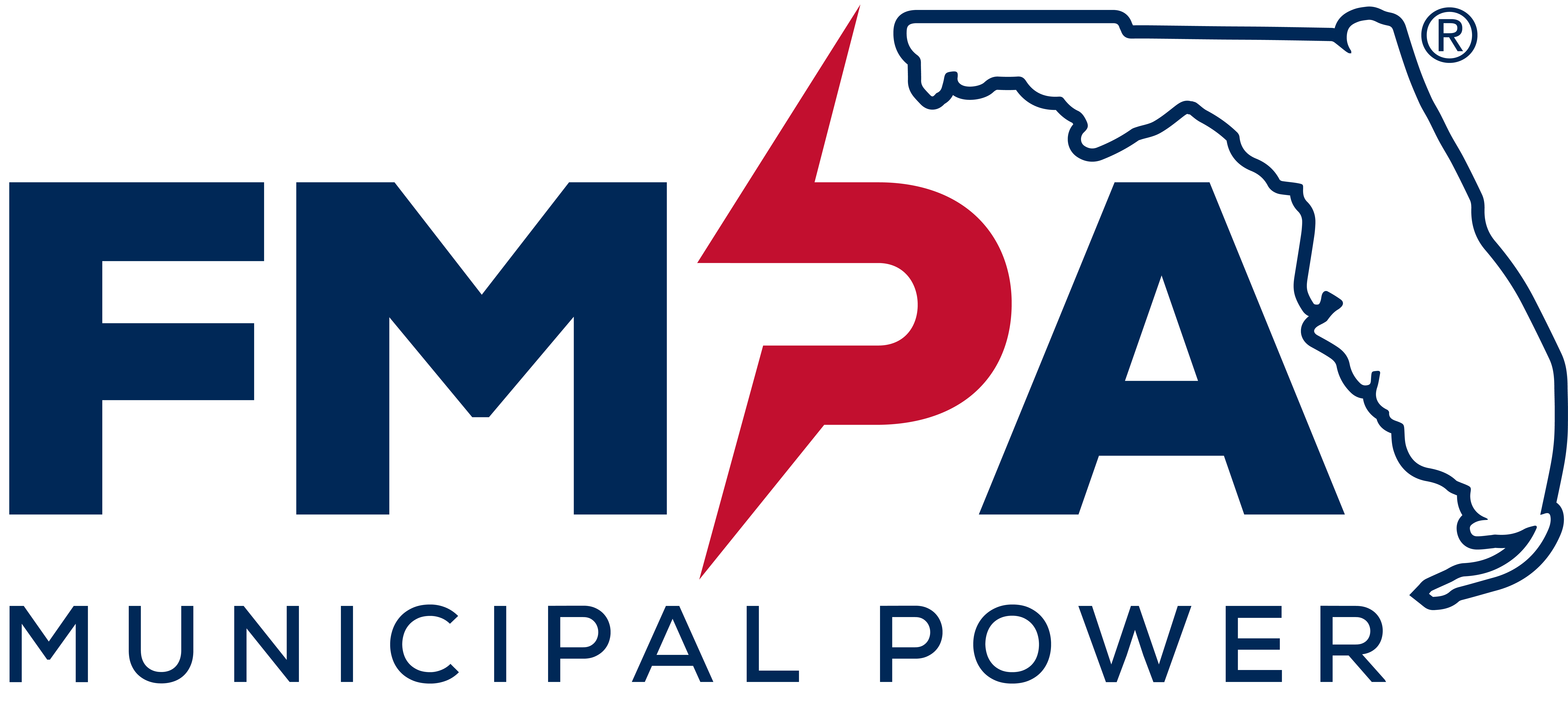All Electric Transmission Lines Are Equal, But Some Transmission Lines Are More Equal Than Others
ORLANDO, Fla., Aug. 30, 2001 — Florida Municipal Power Agency filed legal actions today to press its case for equal treatment of its transmission line investments compared to that of dominate transmission owners like Florida Power & Light. Without regulatory or court relief, FMPA claims that efforts to restructure the nation’s electric transmission system will not treat all of the nation’s transmission facilities fairly.
“Our public power agency is caught between policy decisions that create a discriminatory system where, to paraphrase George Orwell, all electric transmission lines are equal, but some transmission lines are more equal than others,” said Roger Fontes, FMPA’s general manager and CEO.
The Federal Energy Regulatory Commission (FERC) is trying to address transmission congestion problems and complaints of anti-competitive practices on the part of large transmission owners by establishing independent organizations to operate the transmission system. These independent organizations should price transmission service fairly and operate the transmission grid equitably in order to maximize operating efficiency without favoring a particular power supplier.
The drive to establish such regional transmission organizations (RTOs) is proceeding slowly, largely because major utilities that own generation and transmission are jockeying to give themselves a competitive advantage in exchange for turning over their
transmission assets. Small consumer-owned utilities like FMPA and its members say that their transmission facilities are not being treated equally with the transmission of large, private power companies.
FMPA is a nonprofit, wholesale provider that supplies power to community-owned electric utilities around Florida. To deliver the power to the cities, FMPA purchases transmission service from Florida Power & Light and Florida Power Corporation. The cost of this service is based on FMPA’s proportional share of the total cost of FPL and Florida Power’s transmission system.
In a filing today at FERC, FMPA asked the Commission to decide how the transmission grid should be defined for rate-setting purposes. In setting transmission rates for the dominate utilities, FMPA says the Commission must take into account that FMPA and its member cities have transmission, like the large utilities, which is necessary to provide reliable transmission service. Where the small utilities have transmission that is comparable to the large utilities, FMPA claims it is entitled to be paid for its
transmission investments.
“Our position is and always has been that our transmission should be treated in exactly the same way as other transmission owners,” said Fontes. “If the transmission facilities of private utilities count, then our comparable facilities must count. If regulators
exclude our facilities, then the comparable facilities of private utilities must be excluded from transmission rates. The unfortunate and unfair situation we are in now allows private utilities to receive all their costs while we and our members are denied payment.”
FMPA also filed today an appeal at the U.S. Court of Appeals for the D.C. Circuit. FMPA claims that FERC made a serious mistake July 26 when it ruled in another case that there was insufficient evidence that the cities’ transmission is integrated with the private utilities’ transmission.
“Until FERC agrees that the transmission facilities of consumer-owned utilities will count just like private utilities, RTOs will be impossible to establish,” said Alan H. Richardson, president and CEO of the American Public Power Association, a national service
organization for community- and state-owned electric utilities. “The entire rationale for restructuring transmission is to ensure that transmission providers and their customers are treated equally,” he said.
The cost of including FMPA’s facilities would have minimal impact on large utilities, but it is crucial to achieving comparability. Currently, FMPA pays for its proportional share of the large utilities’ transmission facilities plus the cost of its own transmission. If, through proper credits, the costs to all users of the combined Florida transmission system were to be equalized, the approximate effect on FPL’s customers, for example, would equate to slightly more than one-tenth of a cent per kilowatt-hour. In other words, for a typical residential customer using 1,000 kilowatt-hours per month, the effect would be about 12 cents per month.
“What’s important for electric consumers to recognize is this: Today, the transmission lines are like toll roads constrained by the actions and interests of individual proprietors. In the near future, we want the lines to be more like the interstate highway system,” said Fontes. “To open the system to competition will cost consumers only pennies per month. It’s peanuts compared to the potential savings for all consumers once the highways of commerce are opened for the electric utility industry.”
